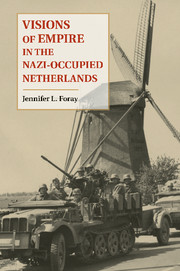Book contents
- Frontmatter
- Contents
- Acknowledgments
- Abbreviations
- Introduction
- 1 War Comes to the Kingdom
- 2 The Landscape of Resistance and the Clandestine Press
- 3 “Look to the East!”
- 4 “Indies Lost, Disaster Born”
- 5 Mutuality, Equality, and the Commonwealth
- 6 Countering the Commonwealth
- 7 “After Our Liberation, That of Indonesia”
- 8 Wartime Consensus and Postwar Pressures
- Conclusion
- Bibliography
- Index
- References
2 - The Landscape of Resistance and the Clandestine Press
Published online by Cambridge University Press: 05 December 2011
- Frontmatter
- Contents
- Acknowledgments
- Abbreviations
- Introduction
- 1 War Comes to the Kingdom
- 2 The Landscape of Resistance and the Clandestine Press
- 3 “Look to the East!”
- 4 “Indies Lost, Disaster Born”
- 5 Mutuality, Equality, and the Commonwealth
- 6 Countering the Commonwealth
- 7 “After Our Liberation, That of Indonesia”
- 8 Wartime Consensus and Postwar Pressures
- Conclusion
- Bibliography
- Index
- References
Summary
Over the course of the five-year occupation, Dutch resisters engaged in a dizzying array of organized activities, with some clandestine groups claiming numerous and simultaneous specializations. Unlike their counterparts in France, for instance, the majority of clandestine organizations operating in the occupied Netherlands neither offered direct assistance to the Allied war effort nor engaged in armed conflict with the occupier as an end unto itself. Rather, they specialized in what Jacques Semelin has termed “civilian resistance.” Defined as “the spontaneous process of resistance by civilian society using unarmed means, and mobilizing either its principal institutions or its people – or both at the same time,” civilian resistance aimed to “preserve the collective identity of the attacked societies; that is to say, their fundamental values.” Further, it defended specifically civilian goals, such as the integrity of society. The two principal forms of clandestine activity in wartime Holland can be located squarely within these parameters. The first revolved around rescue: the creation and maintenance of extensive networks dedicated to sheltering and providing for the hundreds of thousands of Dutch men, women, and children who sought to evade their German occupiers, whether for religious, political, or other reasons. The second major form of resistance was the creation and dissemination of clandestine publications. All resisters operated in a challenging historical context, and their actions were punishable by death. Yet if members of the first group charged themselves with protecting the most needy and vulnerable fellow citizens among them, members of the second group fulfilled other functions too – functions concerned as much with the nation’s future as with prevailing circumstances in the occupied country. The resisters of the clandestine press exercised the role of opinion leaders in a time of repression, and they expected that their wartime activities would help forge a new postwar world. In other words, they considered themselves underground political activists, fulfilling a vital function in occupied society.
- Type
- Chapter
- Information
- Visions of Empire in the Nazi-Occupied Netherlands , pp. 56 - 90Publisher: Cambridge University PressPrint publication year: 2011



